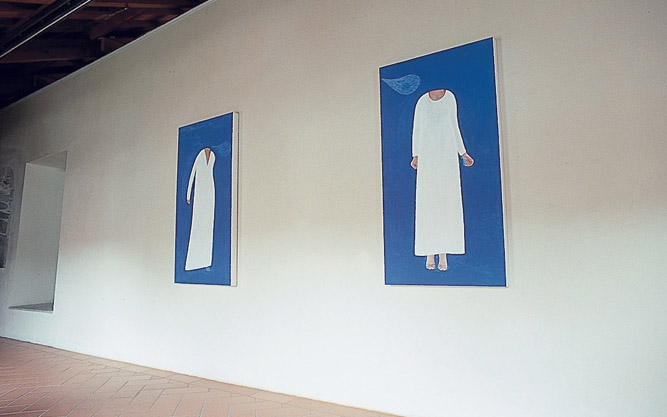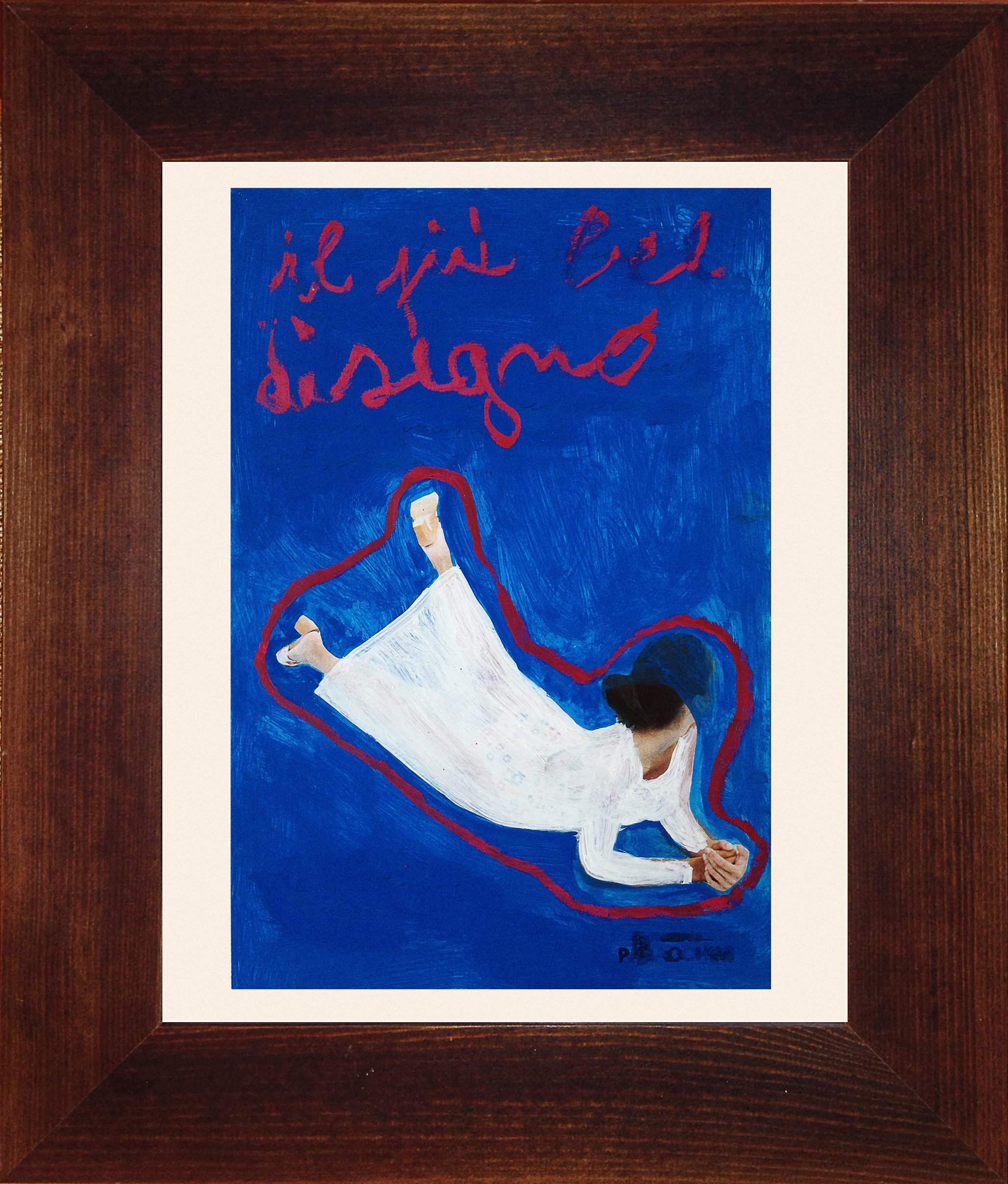L’altro senso dell’arte

di GIANLUCA BOLDETTI
2000
Riccardo Paracchini è caratterizzato da una certezza: l’arte è ciò che permette all’uomo di elevarsi dal senso terreno delle cose, in una sorta di tensione verso l’infinito. La produzione di Paracchini in mostra consiste in ritagli di giornale trasferiti su tela, principalmente corpi femminili senza volto, e poi “vestiti” da un rivestimento pittorico che fa loro acquistare nuova vita. Così ciò che prima era semplicemente l’immagine (pubblicitaria) di un corpo, uno sterile oggetto cartaceo, diventa di volta in volta un fantasma, un angelo, una madre (anonima); viceversa un fiore diventa immagine simbolica di una particolare fanciulla, un ritratto. (Qui è necessario aprire un excursus: l’artista avvertiva un’ingiusta discriminazione della “natura morta” nella pittura moderna – la scelta di tale soggetto ha quindi carattere reazionario).
La pittura ha qui compiuto il “miracolo” di infondere un immaginario significato, quasi una vita, a ciò che prima era uno sterile oggetto. Infine va notato un certo fascino che la pittura di Paracchini ha per certa produzione sacra, quella delle icone, di funzione moralizzatrice, e non è un caso che l’artista prediliga tonalità facili e distensive come il bianco, l’azzurro ed il rosa. Arte quindi quella di Paracchini che utilizzando tecniche relativamente recenti come il trasferimento della fotografia su grandi tele e la commistione fotografia-pittura (vedi i celeberrimi ritratti di Wharol) esprime temi e concezioni divenute ormai “classiche”.
Nel 2000 Gianluca Boldetti aveva 16 anni quando decise di scrivere questa recensione.
GOOGLE TRANSLATION
Riccardo Paracchini is characterized by a certainty: art is what allows man to rise above the earthly sense of things, in a sort of tension towards the infinite. Paracchini’s production on display consists of newspaper clippings transferred to canvas, mainly faceless female bodies, and then “dressed” by a pictorial coating that gives them new life. Thus what was previously simply the (advertising) image of a body, a sterile paper object, becomes from time to time a ghost, an angel, an (anonymous) mother; vice versa a flower becomes the symbolic image of a particular girl, a portrait.
(Here it is necessary to open an excursus: the artist felt an unjust discrimination of the “still life” in modern painting – the choice of this subject is therefore reactionary).
Painting has here performed the “miracle” of infusing an imaginary meaning, almost a life, to what was previously a sterile object. Finally, it should be noted that Paracchini’s painting has a certain charm for a certain sacred production, that of icons, with a moralizing function, and it is no coincidence that the artist prefers easy and relaxing shades such as white, blue and pink. Therefore, Paracchini’s art uses relatively recent techniques such as the transfer of photography onto large canvases and the combination of photography and painting (see the very famous portraits of Warhol) to express themes and concepts that have now become “classic”.
Altri Testi…
